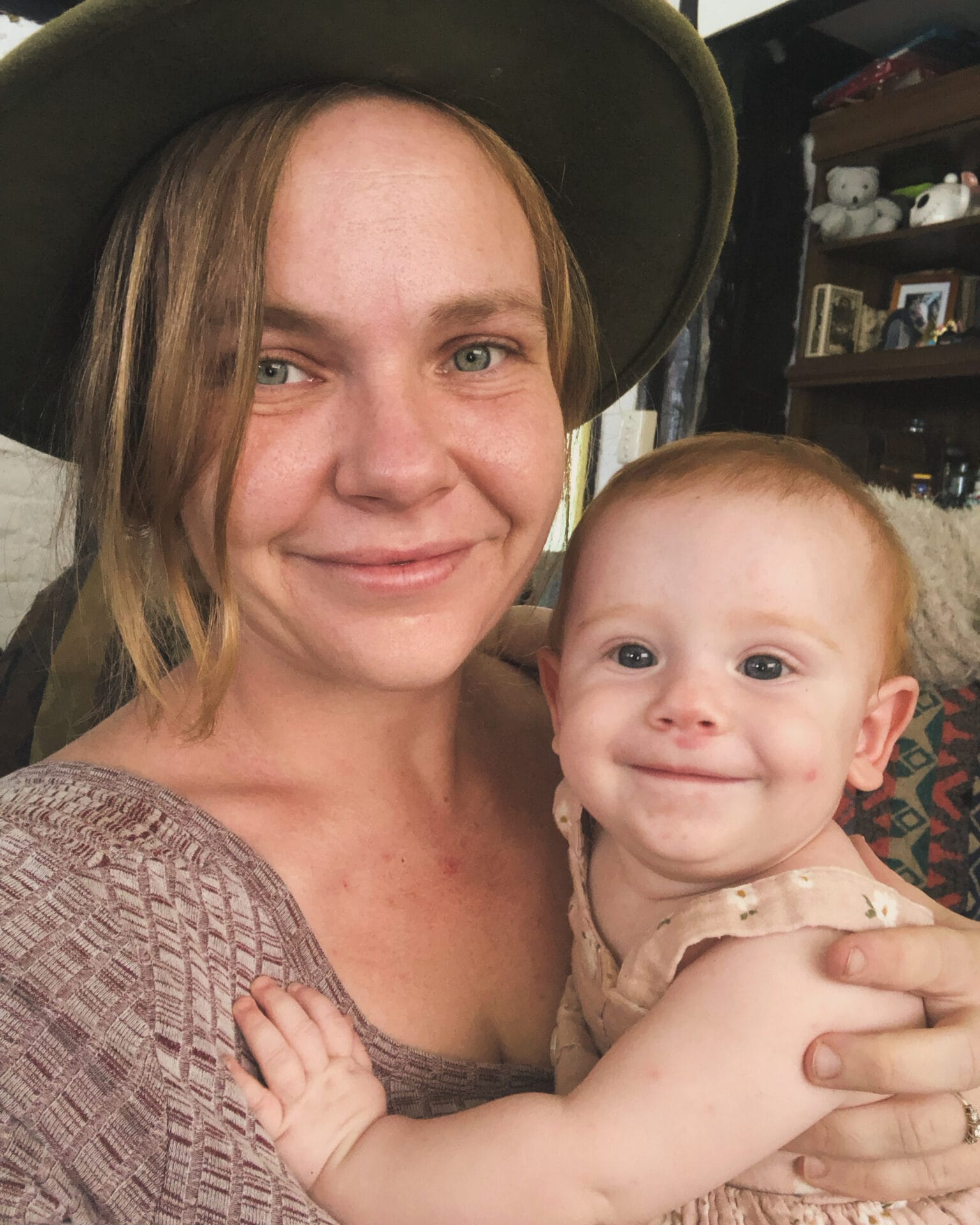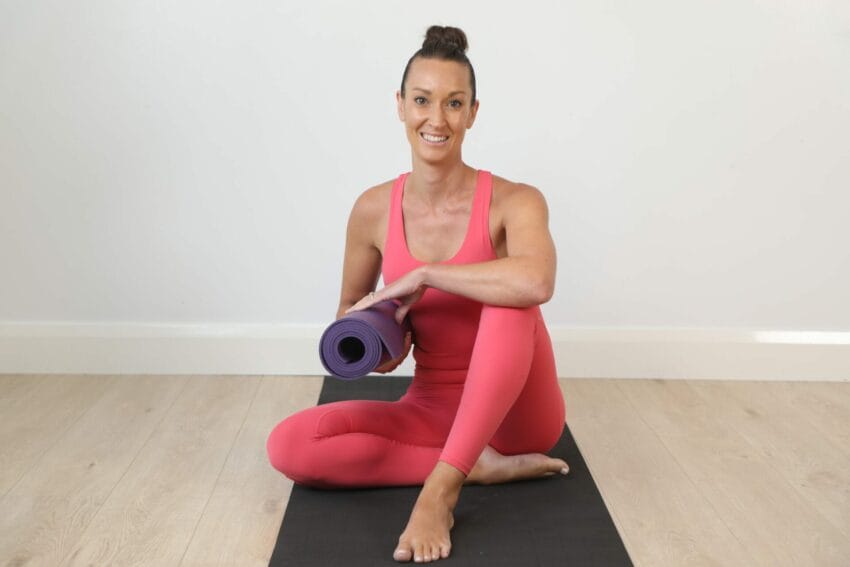What exercise is safe to do after having a baby, especially a c-section?
A easy step by step guide of how to start your exercise routine to being losing weight after having a c-section after birth.
It is understandable that new mums are keen to get their bodies back in shape and lose weight post-pregnancy, but taking time to recover from pregnancy and delivery is important before getting back into exercise.
If your baby was born by caesarean section this is all the more so. Your first and foremost priority is to recover from surgery and settle in with your beautiful new bundle of joy and not rush any fast weight loss.
Here at The Healthy Mummy we are continuously improving and expanding on our 28 Day Weight Loss Challenge App and features.
We pride ourselves on providing helpful, safe and effective fitness programs and meal plans for busy, tired mums wanting to lose weight and tackle their health from the inside out.
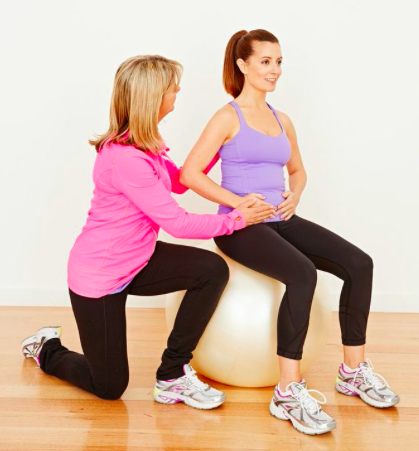
but taking time to recover from pregnancy and delivery is important before getting back into exercise.
If your baby was born by caesarean section this is all the more so.
Your first and foremost priority is to recover from surgery and settle in with your beautiful new bundle of joy and not rush any fast weight loss.
What you need to know about postnatal exercises
The early days and weeks after having a baby are a time for rest and recovery.
Performing simple pelvic floor and core exercises and walking within comfort is all you need to think about at this stage.
Once you have regained your core and pelvic floor strength and if all else is going well, you can commence low impact exercises, generally around 6 weeks after giving birth.
Women who had had a caesarean section can also commence pelvic floor retraining and gentle core recruitment soon after delivery, but avoid any activity that strains your midsection for a good 12 weeks.
As a guide, avoid lifting anything heavier than your baby until you are well healed. You too can gradually return to low impact and low load exercise. You should prioritise your core, pelvic floor and posture in this time.
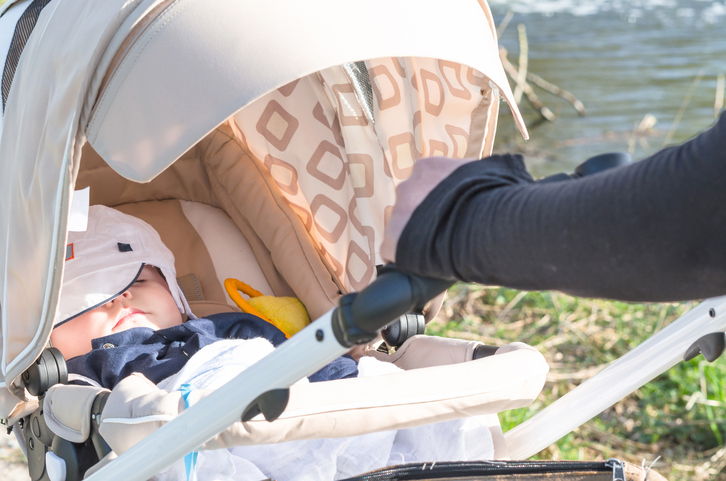
Tips to consider for getting started with postnatal exercise
- Prioritise your pelvic floor and core
- Be kind to yourself, listen to your body and be patient
- Include rest and relaxation into your well-being plan. Consider using the Healthy Mummy Mind.Body.Breath sessions
- Enjoy a healthy diet of fresh food, lean protein and drink plenty of water
- Get out and enjoy the fresh air
- Exercising for 10 minutes here and there in your day is both realistic and easy on your body
- Check your posture frequently, especially when you are feeding
- Team up with other mums. Walk and talk.
- If you are worried about your physical or emotional health, talk to your doctor, family or a friend
What exercises can you do after a caesarean?
C-section recovery
In the early days after a caesarean delivery you will be mostly resting and recovering, with sensible pain management helping you to do gentle activities, commence feeding and bonding with your baby. During this time you will benefit from performing some very simple exercises 3 times per day:
- Pelvic Floor exercises 3 long lifts or 5 – 8 quick lifts , will help strengthen your pelvic floor after assisting the prevention of incontinence and other problems down the track. You can see examples of pelvic floor exercises here
- Core strengthening. The deepest abdominal and back muscles support your spine and pelvis and provide foundation strength for all other activities. As soon as it is comfortable you can lightly start to regain their strength and control. Gently draw your lower abdomen inward and upward and hold for 3 to 5 breaths. Relax and repeat x 3. Check you are not sucking in your waist or ribs and you breathe normally as you draw in below the navel.
- Simple foot and leg movements such as waving your feet back and forth x 10 and bending and straightening your knees x 5 on each leg will help maintain healthy blood flow whilst you are resting in bed.
- Gentle neck and shoulder movements ts will also help to minimise neck and shoulder stiffness and post caesarean postural problems: Sit tall to lengthen your spine, then roll your shoulders slowly up, back and down x 10 then carefully roll your head and neck in a small circle 3 times each direction.
Easing back into postpartum exercise

As the days go on, simply getting up and about and looking after your baby is all the activity you need plus continuing pelvic floor strengthening and neck and shoulder stretches. Avoid any heavy lifting or strenuous activity for a good six weeks or more.
When you are comfortable you can start light walks. Getting out and about with your baby in the pram is great for your mind as well as your body.
Commence with 5 minutes and gradually increase your time within comfort , monitoring your comfort and energy levels.
Focus on your core to support your body, back and posture
The life of a new mum involves plenty of leaning forward over your baby, at the change table, on the floor and when cuddling or feeding.
This leaves them prone to neck and back problems. Add to this a subconscious tendency to protect your abdominal wound, women who have had a caesarean are even more at risk of back muscle weakness, strains and associated aches and pains.
To keep your back strong and your posture proud, sit or stand tall frequently and continue your simple neck and shoulder exercises.
Add upper back strengthening to your daily routine. Sit or stand tall with your fingers resting behind your ears and elbows pointing sideways. Lift your pelvic floor and engage your core then, without arching your back glide your elbows backwards , focusing on drawing your shoulder blades inwards and down wards. Repeat x 5
In regards to moving onto more strenuous exercise, you are well advised to continue gentle walking and light activities for 12 weeks after a caesarean delivery.
Then within comfort you may gradually return to low impact exercises, swimming and gentle strength training.
Sound healing and strong core muscles are imperative before trying abdominal curls and weight training. Gentle pilates style core exercises, raising an arm or leg on all fours for example, are ideal preparatory exercise for weeks prior to ab curls. As a guide to when you are ready , you should be able to engage and maintain pelvic floor and core recruitment before and during any exercise.
Most importantly, always listen to your body and know that you will get back in shape …all in good time.
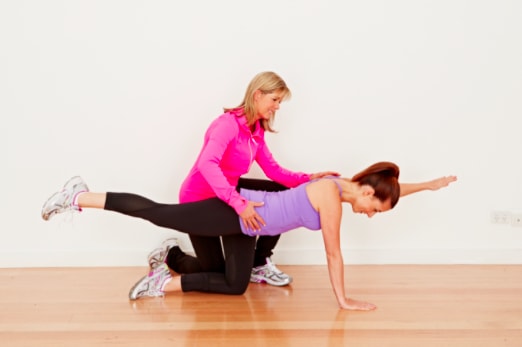
What you should do and avoid when doing exercises after a caesarean
Do
- Take time to recover and heal
- Listen to your body
- Perform gentle pelvic floor, core, circulation and mobility exercises early on
- Start gentle low impact exercise such as walking at 6 weeks or so and progress gradually
- Progress to low impact and light resistance exercise programs when your body is ready, this is usually at around 10 – 12 weeks
- Seek advice from a womens health physiotherapist or women health experienced fitness instructor as to when and what is right for you
- Acknowledge the amazing work your body has done and the fabulous job you are doing
- Be patient and kind to yourself during this precious time
- Believe with confidence that you will get your body back in shape in time
Avoid
- Too much, too soon
- Placing undue stress or expectation on your body or your mind
- Over-stressing your scar, pelvic floor, body and energy levels
- Lifting anything heavier than your baby for 6 – 12 weeks
- Exercise if you feel unwell or tired or have any pain or concern
- Exercise in the water until your lochia, post-birth bleeding, has ceased and your incision is well healed
- Any exercise during which you are unable to maintain pelvic floor and core recruitment
A few of the best exercises for when you’ve had a c-section
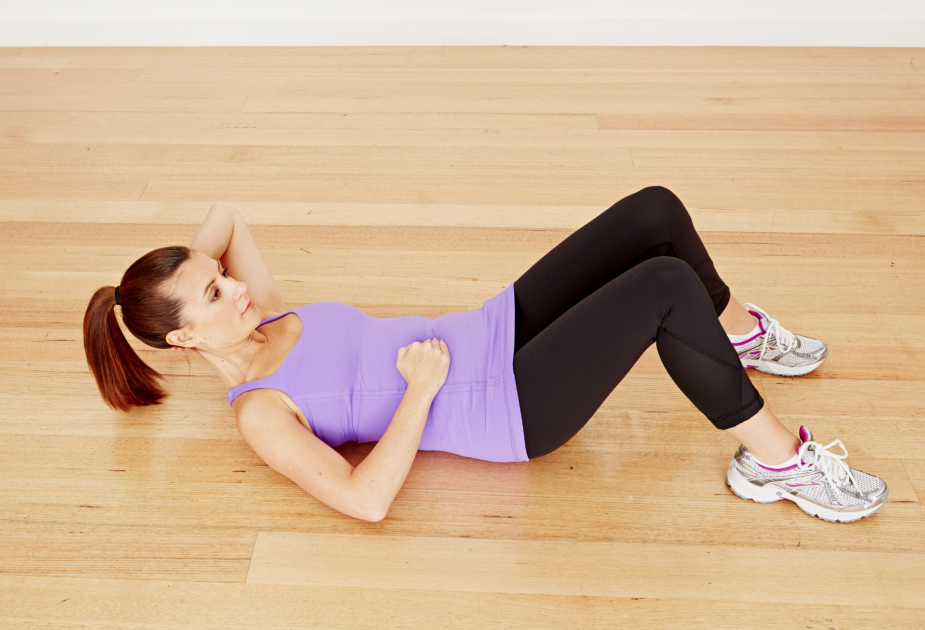
When you are recovering from a cesarean section you need to remember that you are recovering from major surgery and therefore you need to treat your body as such. Once you have been given the green light to start exercising again by your health care professional it’s best to start with gentle exercise.
When beginning to do any postnatal exercise you need to be sure to stay mindful of possible issues such as diastasis recti or muscle separation. And when it comes to post-caesarean you need to be careful that you don’t damage your scar tissue as it heals.
Abdominal muscles
If you are wanting to work your abdominal muscles to get back your pre-pregnancy flat tummy some exercises you might want to try include sit ups and other abdominal exercises.
Sit ups will work to flatten your tummy muscles but these aren’t the only abdominal exercises that you need to think about you can also work on your back and side abdominal muscles by including leg raises in your workout routine.
Pelvic floor muscles
An important type of exercise you should consider including in your postnatal exercise program is pelvic floor exercises. Most of the time when pelvic floor exercises are discussed as part of any postnatal exercise routine, its part of a discussion of vaginal birth but they are just as important if you have a c-section delivery.
In fact all women should work on building the strength of their pelvic floor muscles. There are many pelvic floor muscle workout routines that can help you with this as part of the 28 Day Weight Loss Challenge.
***Disclaimer: This information is to be used as a guide only. Know your own body and if constant bloating persists, we recommend you visit a physician or dietician to investigate the issue further.***

